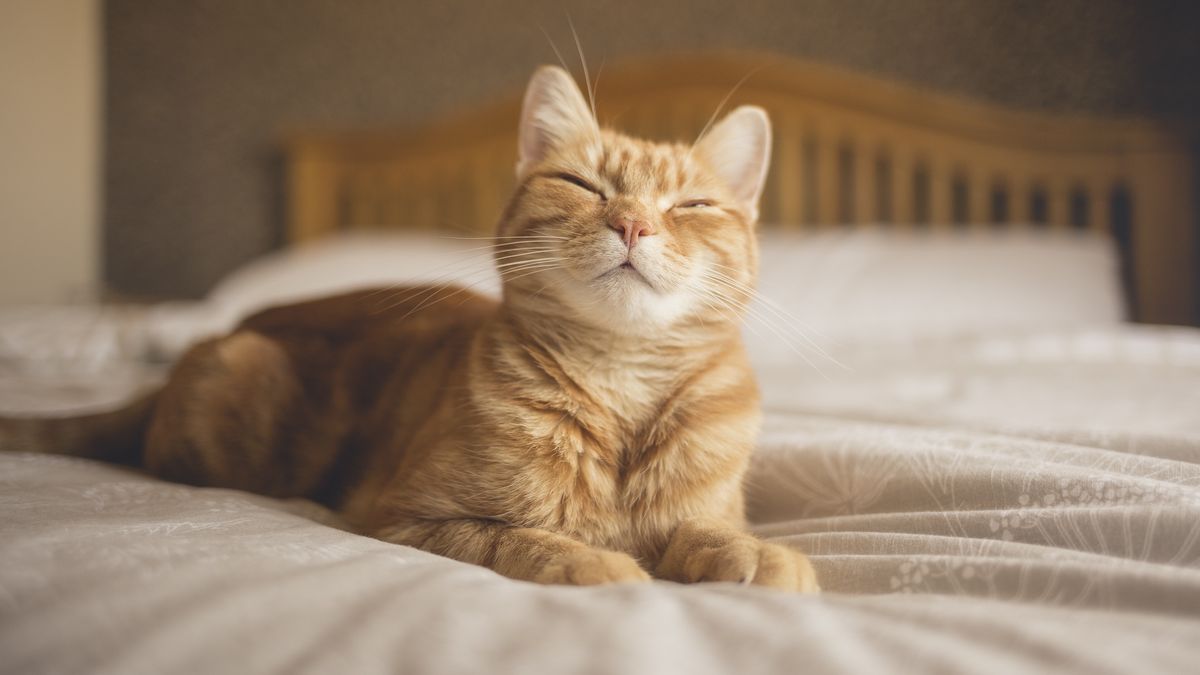The domestic cat is one of the smallest members of the family Felidae — the group that includes lions, tigers, jaguars and cougars. It is also the only member of that family that has been domesticated.
Cats have lived among humans for thousands of years. They probably started hanging around human grain stores, attracted by mice and other vermin, and eventually spread around the world as sailors brought them aboard ships.
Today, cats still help humans control pests, as well as provide companionship. In the past few centuries, humans have bred some cats to display certain traits, like hairlessness, thereby establishing dozens of cat breeds. With their charming mix of aloofness and goofiness, cats continue to amuse and fascinate us.
Everything you need to know about domestic cats
When were cats domesticated?
Cats were domesticated around 10,000 years ago. Today’s domestic cats descend from Felis silvestris lybica, a wildcat subspecies found in Africa and the Middle East. Genes from cats found in archaeological sites in the Middle East, Europe and Africa reveal that about 10,000 years ago, in modern-day Turkey, cats started to associate with humans and split from their wild relatives.
Despite having relatively small natural ranges, F. s. lybica showed up in eastern Europe by 4400 B.C., according to ancient cat DNA found at archaeological sites. This suggests that cats hitched rides aboard ships with traders, who probably appreciated that cats kept rats in check. Cats certainly traveled long distances: DNA from Egyptian cats has been found as far as a Viking site in northern Germany dating to between A.D. 700 and 1000.
The oldest known burial of a domesticated cat comes from Cyprus, where a human and a cat were buried together 9,500 years ago. Cat bones also have been found buried in 5,300-year-old refuse pits in China.
The ancient Egyptians revered cats. Here, we see statuettes and figurines depicting cats and Egyptian deities found in a cache dating to the Egyptian Late Period (around the fifth century B.C.). (Image credit: Photo by KHALED DESOUKI/AFP via Getty Images)
Cats took on a starring role in ancient Egypt. Scientists aren’t yet sure whether the Egyptians domesticated cats separately from the Middle East lineage, or whether the cats spread from Turkey to Egypt.
Either way, Egyptians treasured cats’ protectiveness and independence and saw the traits of their gods in cats. Cats were sometimes even mummified lovingly next to their deceased owners, but they were also sacrificed in large numbers during religious rituals. Bastet, a feline-headed goddess, was worshipped as a protector and as a deity of pregnancy and childbirth.
Related: Why were the ancient Egyptians obsessed with cats?
Did cats domesticate themselves?
You might hear that cats “domesticated themselves.” This is because ancient wildcats likely chose to hang around human agricultural settlements, resulting in a mutually beneficial relationship between cats and humans. These settlements provided ample food and shelter for cats.
Because the cats helped keep vermin at bay, the people who inhabited these settlements tolerated — and eventually welcomed — cats’ presence. Whereas humans domesticated dogs through artificial selection by breeding for desirable traits, domestic cats evolved simply through natural selection, as friendlier and more docile cats thrived in close contact with humans.
Are cats as domesticated as dogs?
Cats are not as domesticated as dogs are. Whereas cats were domesticated about 10,000 years ago, genetic evidence suggests that dogs were domesticated between 14,000 and 30,000 years ago. It’s still up for debate exactly how and why some wild wolves evolved into friendly house pets, but it is clear that humans have spent much more time and effort shaping the genetic makeup of domestic dogs.
In fact, scientists say that even today, cats are “only just” domesticated. Many domestic cats are actually feral, meaning they live outside of human captivity and can fend for themselves. Feral cats and house cats also regularly interbreed, so house cats retain many of their “wild” instincts.
People also bred domestic dogs for thousands of years based on their skills and personalities, whereas humans started breeding domestic cats only within the past few centuries. This means dogs’ temperaments tend to be more predictable and aligned with human needs than cats’.
Even now, modern-day cats are categorized primarily by appearance. Although appearance is also a factor in canine breeding, historically, abilities such as tracking game, herding sheep and guarding property were more important.
Discover more about cats
—Did cats really disappear from North America for 7 million years?
—Are cats and dogs smarter than babies?
—Cat brains are shrinking, and it’s all humans’ fault
